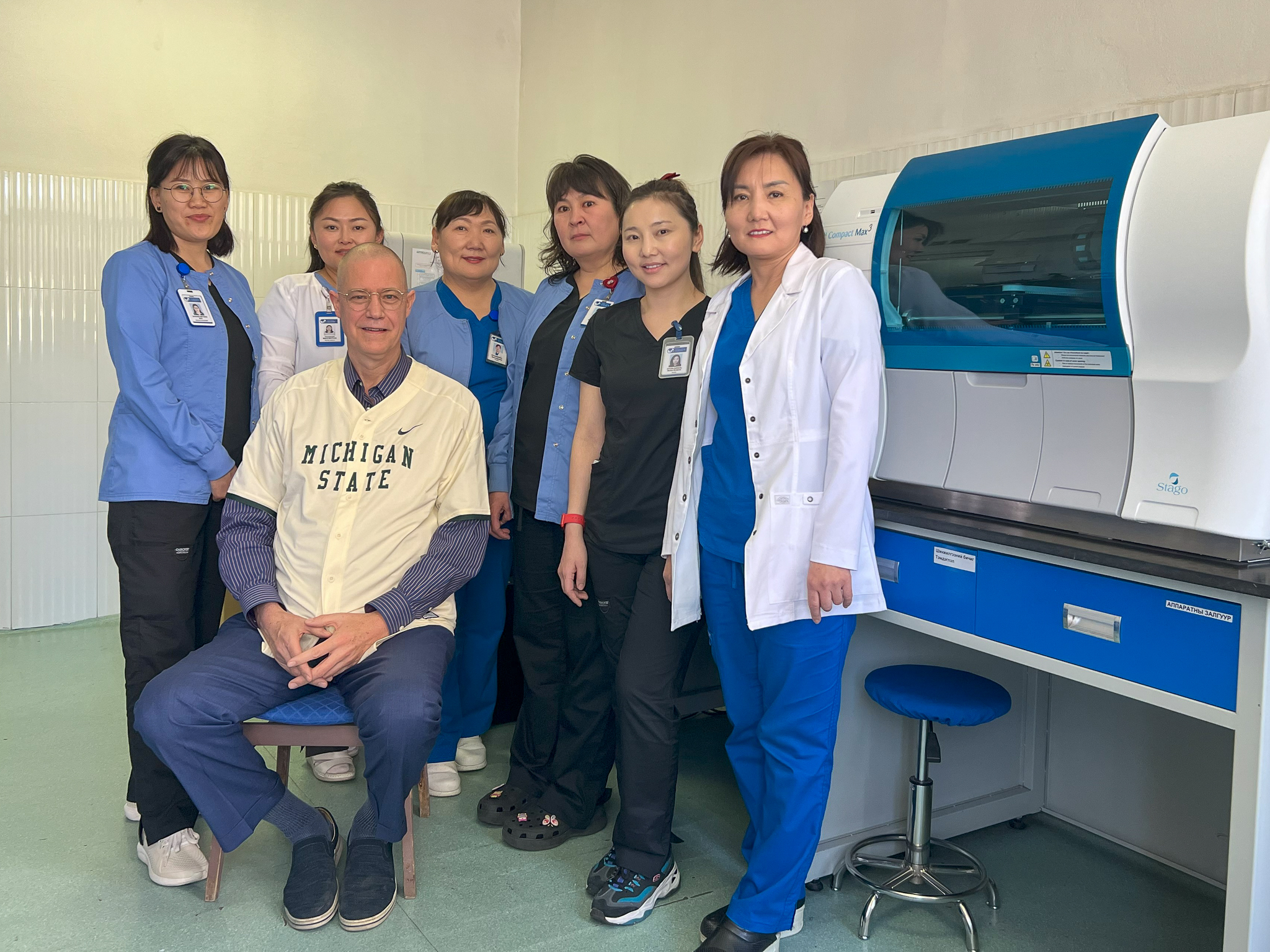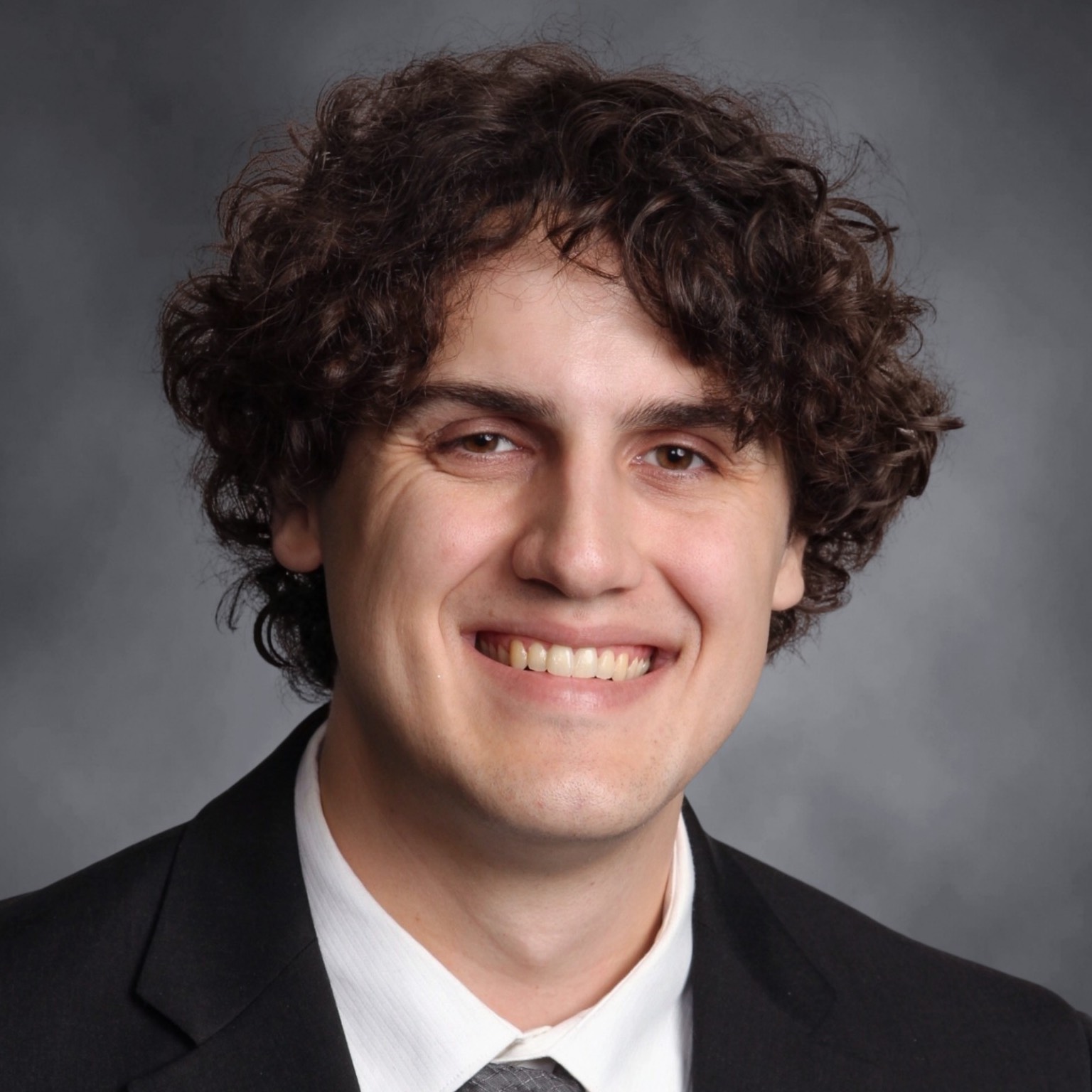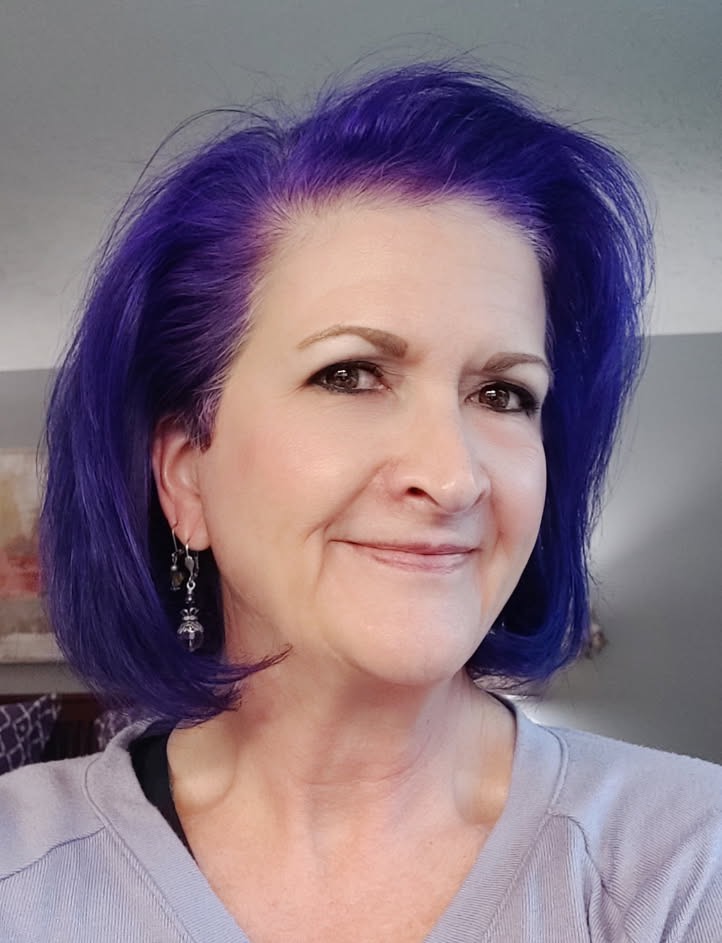Have you ever wondered what clinical medical laboratory medicine is like in a different country?
By Dr. Steven Gustafson, 1989, Biomedical Laboratory Diagnostics Program
I had the opportunity to travel to Mongolia on a medical mission trip in April of 2023 and work with some outstanding people in the laboratory.
Mongolia is located between Russia and China, commonly called the "Land of the Eternal Blue Sky" because it has more than 250 sunny days yearly. The country is divided into 21 provinces or "aimags" and one provincial municipality. The provinces are divided into 333 regions or "soums" which are further divided into 1664 "bags" or hamlets. The capital is Ulaanbaatar. The official language spoken is Mongolian and many speak English. The written language uses the Cyrillic alphabet predominantly, but the Mongolian script is still in use and is being encouraged by the government. During medical school, learning English is encouraged since much of the medical literature is written in English.
While on the mission trip, I was invited to lecture to the medical students at the Mongolian National University of Medical Sciences in Sainshand, Mongolia, and the Mongolia Japan Teaching Hospital, Ulaanbaatar, Mongolia, on primarily endocrine-related pathology topics. We spent a Saturday with about 20 medical students at a local resort in Ulaanbaatar. We discussed differences and similarities between medical training in the USA and Mongolia and topics on spirituality in medicine.
At the National Centre for Maternal and Child Health (NCMCH) in Ulaanbaatar, Mongolia's main government referral hospital for women and children, the clinical laboratory is divided into anatomic and clinical pathology. The clinical laboratory is divided into separate departments, such as hematology, clinical chemistry, immunology, and microbiology, to name a few. The equipment is modern in the larger laboratories, but only offer limited types of testing.
Compared to the labs in the United States, the lab personnel have different training and composition in Mongolia. At NCMCH, there are eight pathologists, two technologists, twenty-eight technicians, and other support staff. The pathologist spends six years in medical school, two years in residency, and an additional six months in a specialized area of pathology such as hematology, immunology, chemistry, molecular biology, or microbiology. The technologist gets the equivalent of a bachelor’s degree in five years. The technician’s study by a diploma degree for four years. The pathologist and the technologist are involved in the testing and running of the instruments. Technologists and technicians work on one of three different 8-hour shifts. The pathologist rotates, taking in-house calls on a thirty-hour shift. Interestingly most of the clinical pathologists are women.
In addition to presenting to the medical students, I gave several surgical pathology lectures to about fifteen pathologists in-person with another twenty to twenty-five on Zoom at The First Central Hospital in Ulaanbaatar, Mongolia.
At NCMCH, I consulted on hematopathology cases, including flow cytometry, bone marrow biopsies, and aspirate smears, in addition to reviewing other tests from the Clinical Pathology Laboratory, including microbiology, immunology, and clinical chemistry. I consulted on multiple surgical pathology cases at the Mongolia Japan Teaching Hospital, Ulaanbaatar, Mongolia.
The Mongolian people are kind, and the food is great. If you get a chance to visit Mongolia, I am sure you will enjoy yourself.

Personnel at The National Centre for Maternal and Child Health (NCMCH)
From left to right: Sarantsetseg, B., Clinical Pathologist of Immunology laboratory, Munguntuul, T., Head of the Department, Oyungerel, S., Clinical Pathologist of Biochemistry laboratory, Gerelmaa. N Clinical Pathologist of Immunology Laboratory, Oyunjargal.B Clinical pathologist of Hematology laboratory, Yagaantsetseg, T., Clinical Pathologist of Biochemistry Laboratory. Sitting front row, Gustafson S. Professor and Anatomic and Clinical pathologist, MSU class of 1989.



